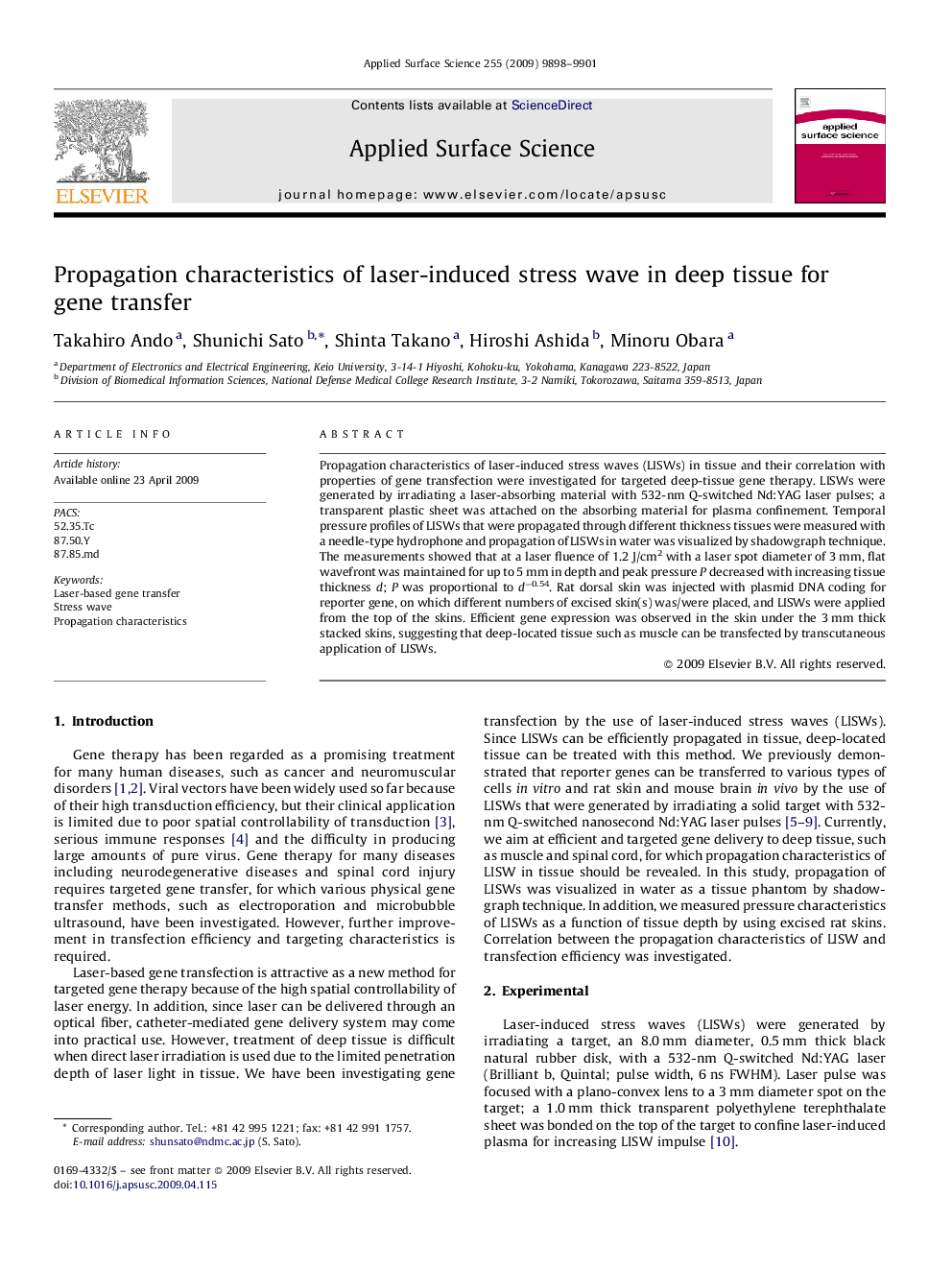| Article ID | Journal | Published Year | Pages | File Type |
|---|---|---|---|---|
| 5361683 | Applied Surface Science | 2009 | 4 Pages |
Abstract
Propagation characteristics of laser-induced stress waves (LISWs) in tissue and their correlation with properties of gene transfection were investigated for targeted deep-tissue gene therapy. LISWs were generated by irradiating a laser-absorbing material with 532-nm Q-switched Nd:YAG laser pulses; a transparent plastic sheet was attached on the absorbing material for plasma confinement. Temporal pressure profiles of LISWs that were propagated through different thickness tissues were measured with a needle-type hydrophone and propagation of LISWs in water was visualized by shadowgraph technique. The measurements showed that at a laser fluence of 1.2Â J/cm2 with a laser spot diameter of 3Â mm, flat wavefront was maintained for up to 5Â mm in depth and peak pressure P decreased with increasing tissue thickness d; P was proportional to dâ0.54. Rat dorsal skin was injected with plasmid DNA coding for reporter gene, on which different numbers of excised skin(s) was/were placed, and LISWs were applied from the top of the skins. Efficient gene expression was observed in the skin under the 3Â mm thick stacked skins, suggesting that deep-located tissue such as muscle can be transfected by transcutaneous application of LISWs.
Related Topics
Physical Sciences and Engineering
Chemistry
Physical and Theoretical Chemistry
Authors
Takahiro Ando, Shunichi Sato, Shinta Takano, Hiroshi Ashida, Minoru Obara,
